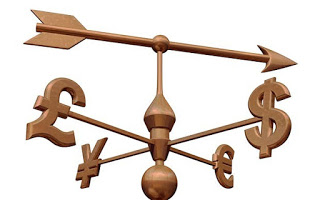
There are two broad themes among the major currencies today. The first is the pullback in the euro and yen after yesterday’s run-up. Position adjustments with the help of stop losses seemed to be the key consideration. Both the euro and yen extended the recovery seen in the second half of last week. Year-end considerations, both in terms of positioning and less liquidity, likely played a role as well.
The second broad theme is the relative strength of the Australian and New Zealand dollars. The RBNZ got the ball rolling with a hawkish rate cut. By that, we mean that although the RBNZ cut rates, its guidance reinforced the view that the 25 bp cut in the cash rate to 2.50% may be the last cut in the cycle. The central bank indicated that at current rates, the inflation target can be reached. To be sure the RBNZ called for further depreciation of the New Zealand dollar.We suspect that, although the RBNZ is on hold for next few months, strength in the currency or continued weakness in commodities will likely put it back into play later in Q1 or early Q2.
The New Zealand dollar staged a sharp rally on the news, and then extended the rally in Asia a little past $0.6780. The failures to rise through the $0.6800 area spurred some liquidation that pushed the Kiwi back to $0.6720.Support is seen in the $0.6680-$0.6700 area.
The Australian dollar was initially dragged higher by the Kiwi’ surge but then got its own impetus in the form of a jobs report that seems too good to be true. The consensus had expected a 10k loss in jobs after a 58.6k increase in October.Instead, 71.4k jobs were reported though the October increase was pared to 56.1.The unemployment rate ticked down to 5.8%, even though the participation rate rose to 65.3% from 65.0%. Also, the breakdown showed a gain of 41.6k full-time positions after a revised 38.4k ( initially 40k) increase in October. Year-to-date, Australia has reported 301.7k new jobs, the best since 2006.













Leave A Comment